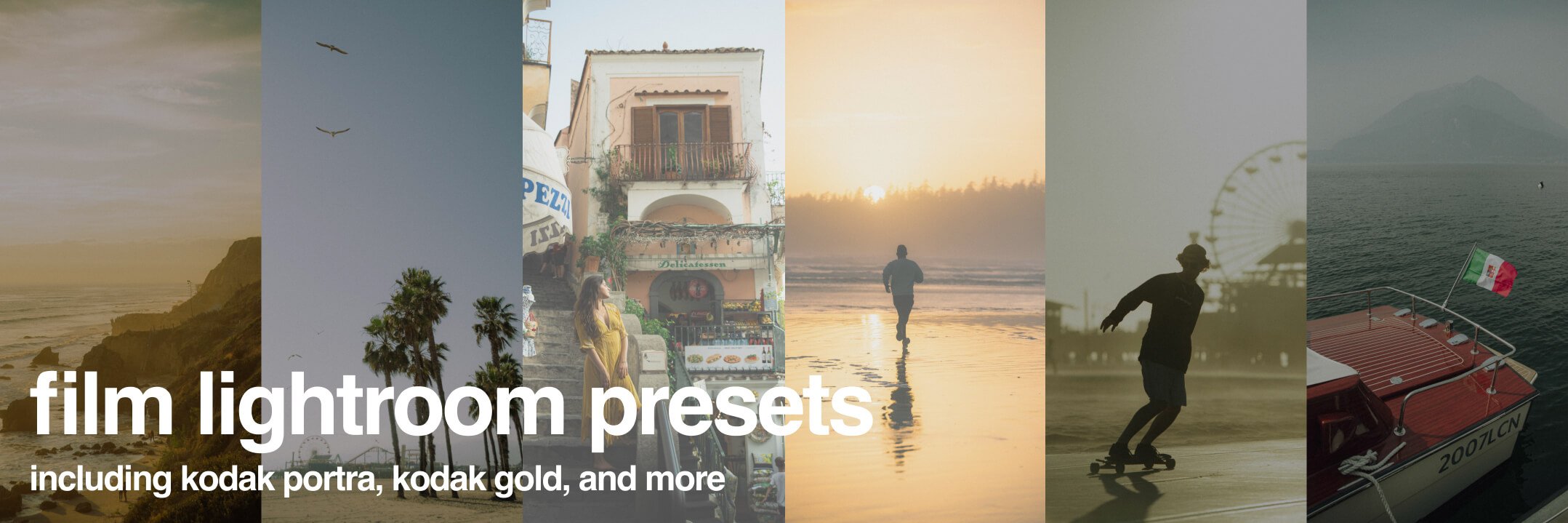Kodak’s array of film stocks has been paired with cameras of all types throughout the decades. Kodak’s Portra film is the reigning professional film of choice from pro to novice film photographers, whereas its more affordable Gold 200 counterpart is a more accessible film, catering to warm tones and golden hour.
You may be at a crossroads deciding which film you want to pop into your camera — what are the differing factors between the films and how can they deliver for you? Well, look no further than our quick guide on Kodak Gold vs. Portra!
Want more photography tips? Join our mailing list below, and check out our several other film photography guides and preset guides.
Give your photography the film treatment with these Kodak Portra and Kodak Gold Lightroom Presets!
- Free Summer Portra Preset | Full Pack: Ultimate Portra Preset Pack
- Free Tinted Kodak Gold Preset | Full Pack: Ultimate Kodak Gold Preset Pack
Kodak Gold 200
Kodak’s Gold 200, as its name implies, is all about gold, oranges, yellows, and everything in between. It’s made to capture the warmth around you and reproduces imagery with beautiful tones meant for golden hour, warmly-lit portraits, and overall warm color palettes.
The 200 ISO of Kodak Gold does mean that it’s a film hungry for light. It needs lots of natural light, or artificial light from flash or studio lights. Shadows come out dark and high contrast, with some details being lost. This combo of low exposure latitude and limiting dynamic range might be off-putting, but are actual traits that photographers admire about the film stock.
Between Gold and Portra, Gold 200 is most comparable to Portra’s lower ISO 160 film. It lacks in exposure latitude, but excels in warm color reproduction and creating dramatic shadows. If these are all attributes you’re looking for, then Kodak Gold 200 is for you!
Check out Kodak Gold 200:
- Gold 200 35mm Film: Get it on Amazon | Get it on Moment
- Gold 200 Medium Format (120) Film: Get it on Moment
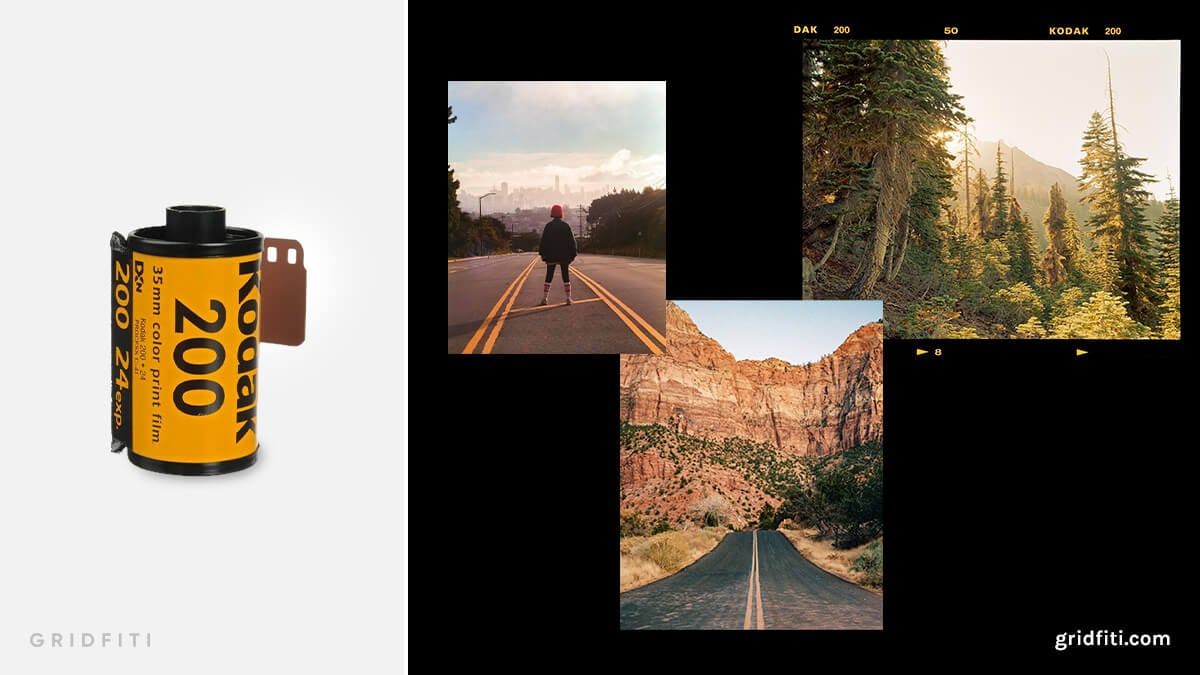
Images via @expiredbren, @wilmwavecherry and @lx2.film
Kodak Portra 160
Kodak Portra, the brand’s most popular film line, serves as professional film used by all and made famous due to its color reproduction and versatility.
The versatility in question is thanks to Portra’s wide exposure latitude, which can adjust in changing lighting conditions from daylight to night, and indoor to outdoor. It’s a film which photographers feel comfortable with over- and underexposing to achieve darkened or lightened results.
The Portra line starts off with the low ISO Portra 160. Known for its ultra fine grain and all the good things that come with the Portra formula, Portra 160 captures fine details – whether it be with portrait photos, nature, or landscapes. Your colors will be reproduced in Portra’s signature punchy tones, balanced highlights, and detailed shadows. Tones within Portra lean towards gold-yellow hues, and tints giving off a similar warmth to Gold 200. Portra is designed to work in many conditions, and 160 is its fine-detailed starting point.
If those Portra prices are looking steep – check out these Portra alternatives and Portra presets.
Check out Kodak Portra 160:
- Portra 160 35mm Film: Get it on Amazon | Get it on Moment
- Portra 160 Medium Format (120) Film: Get it on Amazon | Get it on Moment
- Portra 160 Large Format Film: Get it on Amazon
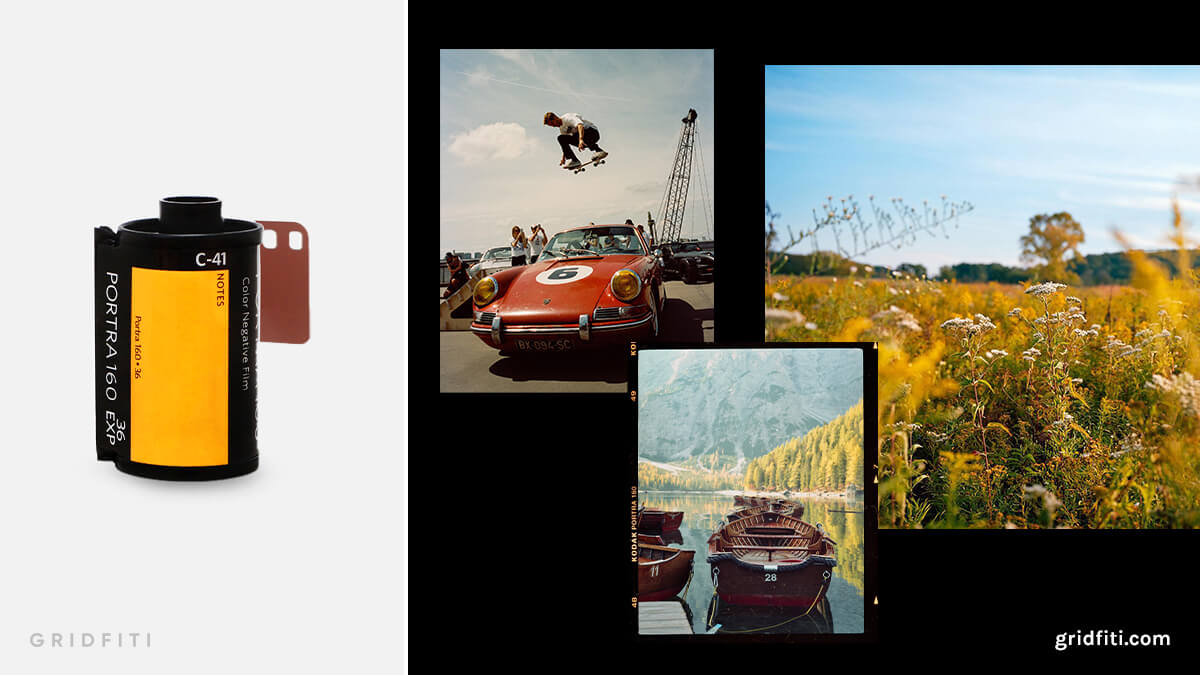
Images via @hugotordjman, @albertgenatophoto.yo, and @little_people
Kodak Portra 400
Kodak Portra 160 is the most comparable to Gold 200, but we thought we’d throw in Portra 400 as a notable contender. Portra 400 is the midpoint between its other 160 and 800 speed offerings. This film is meant to be a bit more versatile in light settings, and can be used from the daytime into the later minutes of golden hour sunsets.
Portra 400’s grain is a bit more evident than 160’s fine grain, but this will mostly be pronounced in photos where light is low. If you get the exposure right, you can achieve a finer grain look.
The same color reproduction of Portra 160 is used here, just with more of a wider exposure latitude.
If you love the Portra 400 look and want to apply it to your digital photography – check out these Portra 400 Lightroom presets!
Check out Kodak Portra 400:
- Portra 400 35mm Film: Get it on Amazon | Get it on Moment
- Portra 400 Medium Format (120) Film: Get it on Amazon | Get it on Moment
- Portra 400 Large Format Film: Get it on Amazon | Get it on Moment
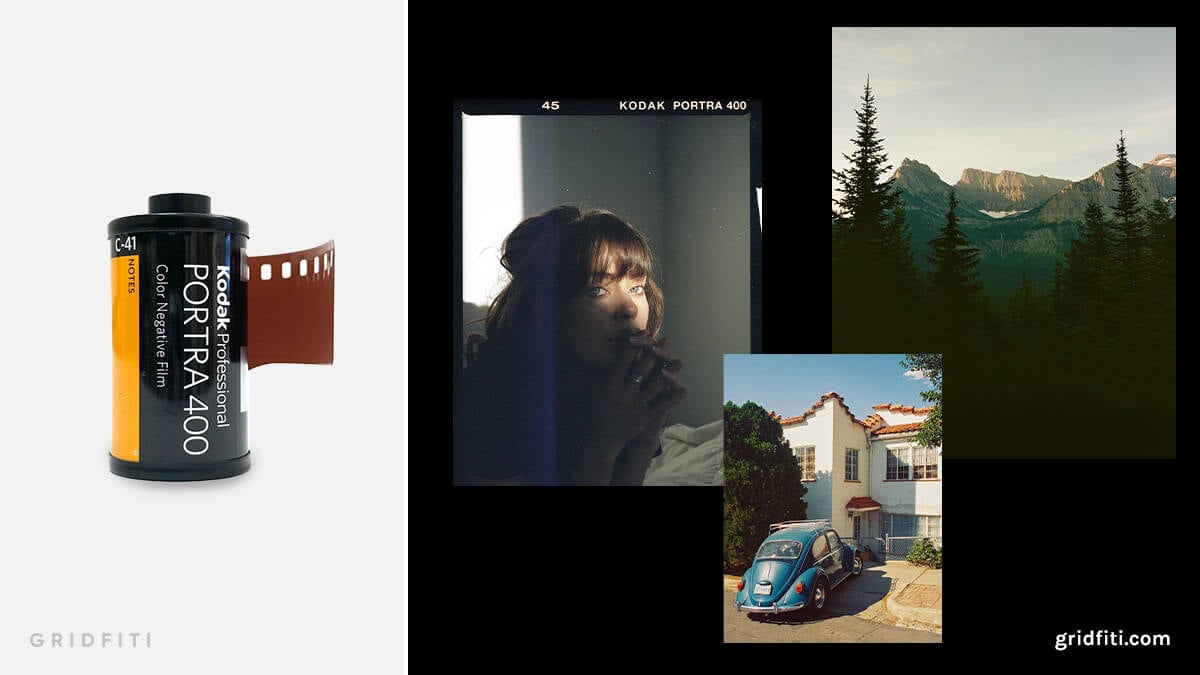
Images via @goldmoony, @phamuelphoto, and @jakeinez
Kodak Portra 800
Kodak Portra 800 is the fastest and most sensitive Portra film — its ISO of 800 is two stops above that of Gold’s 200 ISO.
Portra 800 is prominently used in low-light situations or shoots that involve some dynamic movement. The high ISO’s light sensitivity allows you to capture photos where light isn’t abundant, whether it be an indoor shoot, or outdoor dusk hours. The high ISO also allows you to capture action and speed, as it enables you to shoot at higher shutter speeds without risking underexposure.
Portra 800’s grain comes in at the most noticeable when compared to its lower ISO counterparts. Although grain comes with higher ISO, it’s really only notable in low-light photos, whereas well-lit photos result in a much finer grain look. It’s just a matter of dialing in your exposure right!
Lastly, the same color reproduction of Portra 160 is used here with wider exposure latitude. One thing to mention is Portra 800’s popularity with overexposure resulting in unique pastel tones.
Check out Kodak Portra 160:
- Portra 800 35mm Film: Get it on Amazon
- Portra 800 Medium Format (120) Film: Get it on Amazon
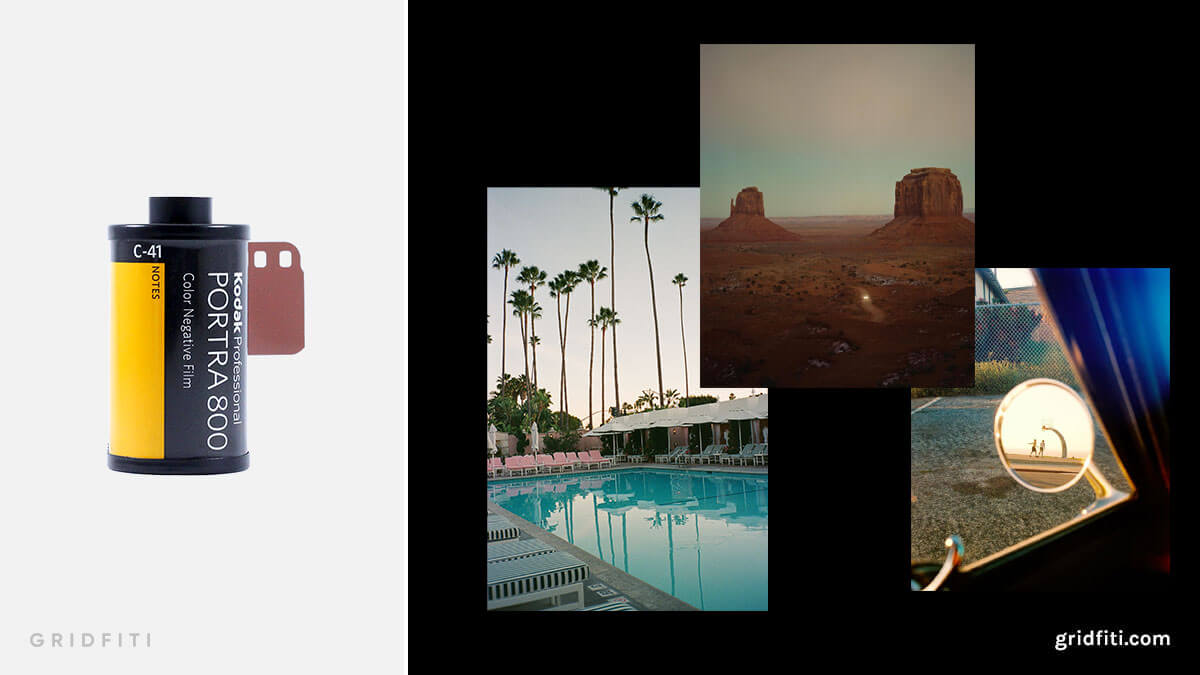
Images via @nick.le, @portra_papi, and @jakeinez
Which of these two Kodak film greats do you prefer? Are you Team Gold or Team Portra? Let us know in the comments below!
Gridfiti is supported by its audience – when you buy something using the retail links in our posts, we may earn a small commission at no additional cost to you. Read more about our affiliate disclaimer.
